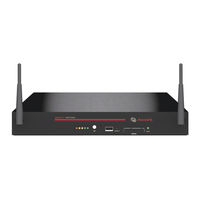Avocent Emerge MPX1500 Extender Manuals
Manuals and User Guides for Avocent Emerge MPX1500 Extender. We have 11 Avocent Emerge MPX1500 Extender manuals available for free PDF download: Installer/User Manual, Brochure, Technical Specifications, Quick Installation Manual, Specifications
Avocent Emerge MPX1500 Installer/User Manual (130 pages)
Avocent AutoView Switch User's Manual Model 1400, 1500 and 2000
Table of Contents
Advertisement
Advertisement
Avocent Emerge MPX1500 Quick Installation Manual (2 pages)
Multipoint High-Definition (HD) Wired/Wireless Extender System
Table of Contents
Avocent Emerge MPX1500 Brochure (8 pages)
Simpler KVM access and virtual media support for midsize data centers
Avocent Emerge MPX1500 Quick Installation Manual (1 page)
Avocent AutoView AutoView 1400: Install Guide
Table of Contents
Avocent Emerge MPX1500 Technical Specifications (2 pages)
Wireless HD Multipoint Extender
Avocent Emerge MPX1500 Brochure (2 pages)
Avocent AutoView AutoView 1400: Supplementary Guide
Advertisement










